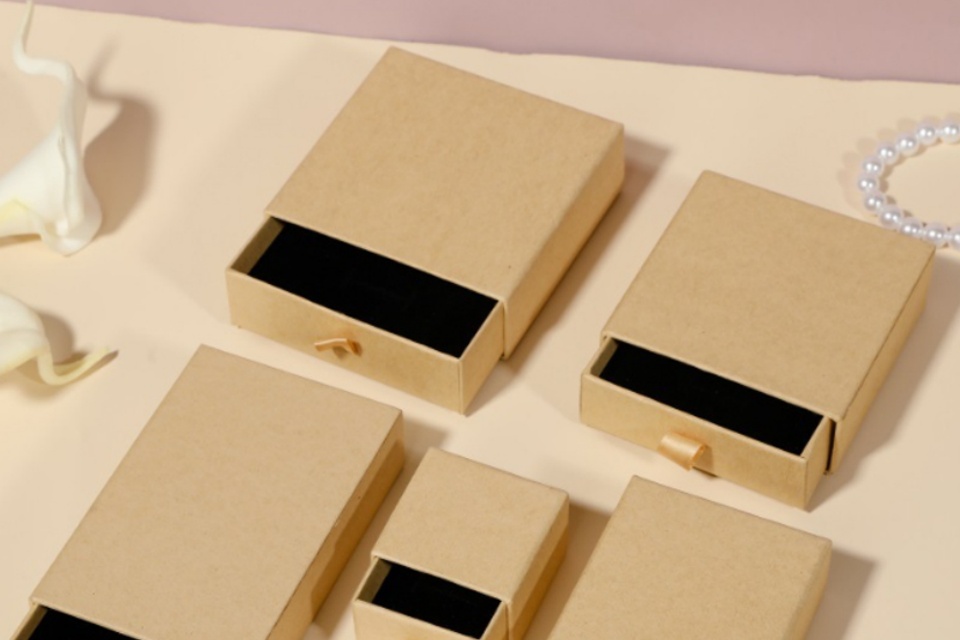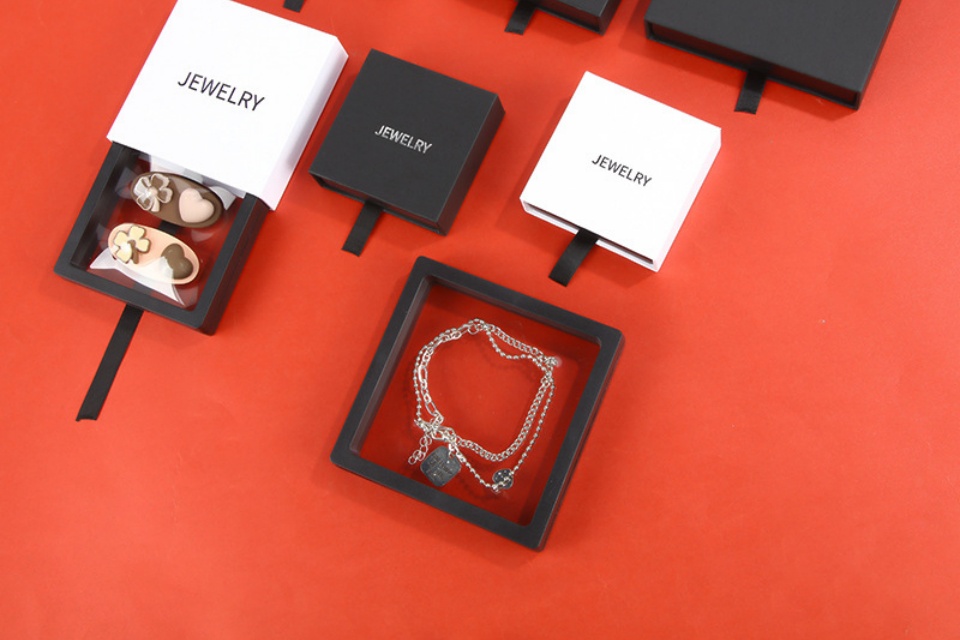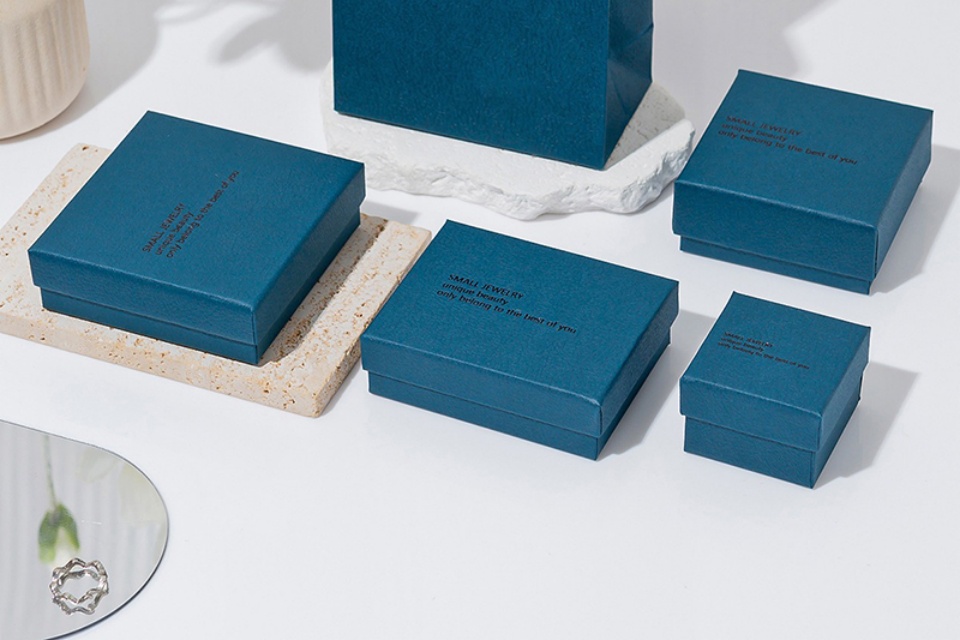Industry News
Trends In Jewelry Packaging Design
Trends In Jewelry Packaging Design
Summary
Trends in Jewelry Packaging Design refers to the evolving practices and aesthetics associated with the packaging of jewelry items, reflecting broader societal changes and consumer preferences. Historically, jewelry packaging served a primarily functional role, but as the market has expanded, brands have increasingly recognized packaging as an integral component of their identity and customer experience. The contemporary jewelry packaging landscape is marked by a balance of luxury, sustainability, and innovation, making it a notable area of interest within the retail sector.
The rise of sustainability as a consumer priority has significantly influenced jewelry packaging design, leading brands to adopt eco-friendly materials and practices. Surveys indicate that a substantial portion of consumers, particularly among younger demographics, are willing to pay more for products packaged sustainably. As brands strive to meet these expectations, they are exploring innovative materials and multi-functional designs that not only protect the jewelry but also appeal to environmentally conscious buyers. The integration of sustainable practices in packaging reflects a larger societal trend towards environmental stewardship, underscoring the growing importance of sustainability in purchasing decisions.
Simultaneously, personalization has emerged as a key trend, with consumers increasingly seeking customized packaging experiences that deepen their emotional connection with products. Innovations such as monogrammed boxes and interactive elements, like QR codes linking to digital content, have become popular as brands aim to create memorable unboxing experiences that resonate with their audience. This focus on personalization and customer engagement highlights a shift in how consumers perceive value in their shopping experiences.
In addition to sustainability and personalization, the design of jewelry packaging has increasingly embraced technological integration, with advancements such as smart packaging solutions featuring NFC tags and augmented reality capabilities enhancing consumer interaction. These trends not only cater to the growing demand for innovative experiences but also position brands to effectively differentiate themselves in a competitive marketplace. As the jewelry packaging industry continues to evolve, the convergence of aesthetics, functionality, and sustainability will remain pivotal in shaping consumer preferences and brand strategies.
Historical Context
The evolution of jewelry packaging design has been significantly influenced by cultural shifts, technological advancements, and changing consumer preferences. Historically, jewelry was often presented in simple pouches or boxes, reflecting the utilitarian approach to packaging. However, as the jewelry market expanded and consumer expectations evolved, brands began to recognize the importance of packaging as an extension of their product identity and storytelling.
The Rise of Vintage and Nostalgia
In recent years, there has been a marked resurgence of interest in vintage aesthetics, driven by nostalgia. According to Dr. Constantine Sedikides, a specialist in nostalgia, such experiences can enhance psychological resilience and play a crucial role in consumer decision-making. This trend has led brands to weave historical narratives into their packaging designs, fostering a deeper emotional connection with consumers. Nimesh Shah, marketing director of Feel Good Contacts, emphasizes that the demand for vintage packaging is at an all-time high, as consumers increasingly seek a simple, traditional shopping experience that echoes the charm of bygone eras.
Balancing Luxury and Sustainability
The early 21st century witnessed a growing awareness of sustainability issues, prompting the jewelry industry to rethink packaging materials and designs. The integration of sustainable practices has become vital as consumers demand eco-friendly solutions without sacrificing quality or aesthetics. In 2024, brands are exploring innovative materials and treatments to enhance their packaging while aligning with sustainable values. This shift reflects a broader societal trend towards environmental consciousness, affecting how jewelry brands approach both product and packaging design.
Interaction and Experience
The importance of micro-interactions in the consumer experience has gained recognition in recent years. As brands seek to create memorable experiences, interactive elements have begun to appear in jewelry packaging. Features such as pull-out drawers and hidden compartments not only surprise consumers but also encourage the reuse of packaging, thus contributing to sustainability efforts. This focus on enhancing consumer interactions is indicative of a larger trend towards experiential marketing within the jewelry industry.
Aesthetic Evolution
The design philosophy surrounding jewelry packaging has also evolved to emphasize a balance between functionality and aesthetic appeal. Contemporary designs often serve dual purposes, acting as both storage solutions and decorative art pieces that enhance the ambiance of a space. This aesthetic evolution reflects an appreciation for craftsmanship and quality, as consumers increasingly seek packaging that complements the luxurious nature of the jewelry itself.
Current Trends in Jewelry Packaging Design
The jewelry packaging landscape is rapidly evolving, driven by consumer preferences for sustainability, personalization, and functionality. As we look toward 2025, several key trends are shaping the design and functionality of jewelry packaging.
Minimalist Design
Minimalism is at the forefront of jewelry packaging trends. Modern consumers are increasingly drawn to clean, uncluttered designs that emphasize the jewelry itself. Simplified forms, neutral tones, and monochromatic palettes are becoming the go-to choices for brands aiming for a sophisticated presentation. This approach not only highlights the quality of the jewelry but also aligns with eco-conscious practices by reducing the use of materials, thus lowering the carbon footprint.
Personalization
Customization is emerging as a pivotal element in jewelry packaging. Brands are leveraging personalized packaging options, such as monogrammed boxes, custom messages, and QR codes that link to tailored digital experiences. This trend aims to create deeper connections with customers, enhancing their overall shopping experience.
Smart Packaging
Technology is transforming the jewelry packaging arena with the introduction of smart packaging solutions. This includes features like NFC (Near Field Communication) tags for product authentication and augmented reality (AR) experiences that allow consumers to visualize how jewelry pieces look when worn. These innovations aim to enhance customer engagement and make the unboxing experience more interactive and memorable.
Multi-Functional Packaging
Multi-functional packaging that serves a dual purpose is gaining traction. Consumers appreciate designs that can be repurposed as jewelry organizers, travel cases, or decorative storage. This trend reflects a broader desire for practicality and sustainability in product packaging.
Eco-Friendly Materials
Sustainability is a significant driver of change in jewelry packaging. Brands are increasingly adopting eco-friendly materials such as recycled paper, biodegradable plastics, and natural materials like bamboo and hemp. These choices not only reduce environmental impact but also resonate with consumers who prioritize sustainability in their purchasing decisions.
Engaging Unboxing Experiences
The importance of the unboxing experience cannot be overstated. Brands are now focusing on creating memorable unboxing moments that engage consumers from the first touchpoint. Incorporating tactile elements and personalized messaging can significantly enhance customer satisfaction and encourage social media sharing.
Influences on Jewelry Packaging Design
Jewelry packaging design is increasingly shaped by various consumer preferences and market trends, reflecting the evolving landscape of retail and sustainability. A primary influence on packaging design is the growing demand for customization, which allows brands to differentiate themselves in a competitive market. Studies show that effective packaging can enhance product value by up to 25% and create memorable consumer experiences that foster brand loyalty.
The Shift Towards Sustainability
As consumers become more environmentally conscious, sustainability has emerged as a significant factor influencing packaging design. A 2023 survey revealed that 73% of Gen Z consumers are willing to pay more for sustainable products, indicating a shift towards eco-friendly solutions. Brands are now prioritizing sustainable materials, such as plant-based plastics, recycled paper, and biodegradable options, in their packaging to minimize environmental impact. This trend not only meets consumer demand but also enhances brand reputation, as many consumers appreciate brands that align with their values regarding sustainability.
Customization and Brand Identity
Another critical influence on jewelry packaging design is the need for brands to convey their identity through their packaging. Customization allows retailers to create unique packaging that reflects their brand story, values, and visual aesthetics. Techniques such as mood boards and competitor analysis can help brands develop packaging that resonates with their target audience. For example, understanding demographics and psychographics can guide the choice of packaging style that appeals to specific consumer segments.
The Role of Packaging Psychology
Packaging psychology plays a vital role in shaping consumer perceptions and purchasing decisions. Factors such as color, material, and design significantly influence how consumers perceive a product's quality and desirability. Luxury brands, in particular, use packaging to evoke emotions and create a sense of exclusivity, enhancing the overall consumer experience and fostering brand loyalty. As such, brands carefully consider their packaging elements to elicit desired emotional responses from consumers, reinforcing their market positioning.
Evolving Consumer Preferences
Finally, evolving consumer preferences are a crucial influence on jewelry packaging design. A study indicated that 72% of American consumers are swayed by packaging design in their purchase decisions, and a similar percentage considers the materials used. As trends shift towards vibrant retro colors and minimalistic eco-conscious designs, jewelry brands must adapt their packaging strategies to remain relevant and appealing to modern consumers.
Case Studies
Emerging Trends in Jewelry Packaging Design
As the jewelry industry continues to evolve, various brands are adopting innovative packaging strategies to enhance consumer engagement and promote sustainability. Case studies from small to medium brands and independent designers illustrate these trends effectively.
Small to Medium Brands
Small to medium jewelry brands are increasingly leveraging custom packaging to differentiate themselves in a competitive market. For instance, many of these brands prioritize eco-friendly materials and personalized designs, which resonate with their environmentally conscious customers. Research indicates that 60% of consumers are more likely to purchase from brands utilizing sustainable packaging options. A notable example is a brand that utilizes wholesale options for packaging that allows customization with their logo and colors, thus enhancing brand visibility and customer appeal. Reports suggest that such tailored packaging has resulted in a 15% increase in brand recognition among their target market.
Independent Designers
Independent jewelry designers are also tapping into the trend of minimalist and modern packaging, which emphasizes clean lines and sophisticated color palettes. These designers are increasingly integrating interactive elements into their packaging, such as QR codes that connect customers to their online presence. This not only enhances the unboxing experience but also fosters deeper brand engagement. Many independent designers report a significant preference among consumers for packaging that not only looks aesthetically pleasing but also serves a functional purpose, such as reusable jewelry cases.
Innovative Designs and Customization
Case studies show that the shift towards storytelling in packaging design is gaining traction. Brands are now experimenting with vibrant colors, hand-drawn elements, and nostalgic designs that evoke emotional connections with consumers. For example, one brand's packaging strategy incorporated playful doodles and simplistic designs that not only attracted attention but also communicated their commitment to sustainability and cultural heritage. This approach has proven effective in connecting with consumers on a human level, thereby enhancing brand loyalty and customer satisfaction.
Functional and Multi-Use Packaging
The demand for functional packaging that serves multiple purposes is on the rise. Brands are beginning to create packaging that can be reused as travel cases or decorative storage solutions, aligning with consumer expectations for sustainability. A recent study revealed that consumers expect brands to take a clear stance on sustainable practices in packaging, with many willing to pay a premium for products that meet these criteria. This highlights the importance of not just aesthetic appeal but also the functionality and environmental responsibility of packaging in today's jewelry market.
Through these case studies, it is evident that jewelry brands are increasingly recognizing the critical role of innovative and sustainable packaging design in enhancing customer experience and fostering brand loyalty.
Challenges in Jewelry Packaging Design
Jewelry packaging design faces a variety of challenges that brands must navigate to effectively capture consumer attention while adhering to sustainability and functional requirements.
Balancing Aesthetics and Sustainability
One of the primary challenges in jewelry packaging is striking a balance between aesthetic appeal and sustainability. Many brands are tasked with incorporating eco-friendly materials without compromising on the visual impact of their packaging. As consumers increasingly prioritize sustainability, packaging must not only look appealing but also be made from biodegradable or recyclable materials, which can sometimes limit design options.
Meeting Consumer Expectations
The demand for innovative and sustainable packaging has surged, compelling jewelry brands to adopt multi-use designs that resonate with environmentally conscious consumers. Packaging that serves multiple purposes—such as reusable boxes that double as travel cases or decorative storage—has become essential. However, implementing these features can increase design complexity and production costs, posing a significant challenge for brands trying to balance budget and sustainability goals.
Protecting Valuable Contents
Durability is another crucial aspect of jewelry packaging. Protecting valuable jewelry items during transit and storage requires robust packaging materials and designs. Brands often need to invest in protective inserts, such as foam or velvet linings, to ensure safe delivery without adding excessive bulk or weight to the packaging, which could lead to higher shipping costs. This necessity can complicate the design process, as brands strive to create packaging that is both functional and visually appealing.
Attracting Consumer Attention
In a crowded marketplace, attracting consumer attention on retail shelves remains a persistent challenge. Brands must not only ensure their packaging stands out visually but also align with consumer values, particularly those related to sustainability and eco-friendliness. Understanding the audience persona and crafting packaging that resonates emotionally with consumers can enhance brand loyalty, but achieving this while adhering to functional and environmental standards is a complex undertaking.
Cost Considerations
While sustainability is essential, the initial costs associated with sustainable materials can be higher than traditional options, presenting a financial challenge for many brands. Additionally, designing innovative packaging that is both appealing and eco-friendly may require significant investment in research and development, which could deter some companies from pursuing sustainable packaging solutions.
Future Directions
The jewelry packaging industry is poised for significant evolution in the coming years, with a focus on sustainability, personalization, and technological integration. As consumer preferences shift, brands are expected to adopt innovative strategies that align with these trends.
Sustainability and Local Materials
One of the key trends shaping the future of jewelry packaging is the emphasis on sustainability. Brands are increasingly utilizing eco-friendly materials, such as kraft paper and biodegradable options, to cater to the growing demand for sustainable practices. A survey indicates that approximately 82% of U.S. consumers are willing to purchase from brands offering products in sustainable packaging. Moreover, incorporating local materials—such as regionally sourced fabrics and woods—reinforces the brand's commitment to environmental stewardship while enhancing its place-based identity.
Personalization and Consumer Engagement
Customization is becoming paramount in jewelry packaging design. Brands are expected to enhance customer experiences through personalized packaging options, such as monogrammed boxes, custom messages, and QR codes linking to unique digital experiences. By fostering a deeper connection with consumers, brands can cultivate loyalty and trust. Future strategies may also include collaborations with local artisans to create unique packaging that tells a story, reinforcing community ties and showcasing craftsmanship.
Technological Integration
The integration of technology into packaging is anticipated to play a transformative role. Smart packaging solutions, such as NFC tags for product authentication and augmented reality (AR) experiences that allow consumers to visualize jewelry when worn, are expected to become mainstream. These innovations not only enhance the customer experience but also create interactive marketing opportunities that appeal to tech-savvy consumers.
Multi-Functional and Practical Design
There is a rising trend towards multi-functional packaging that serves purposes beyond mere product containment. Jewelry boxes that double as organizers or travel cases are gaining popularity, providing added value and practicality to consumers. This shift reflects a broader consumer preference for products that reduce waste and enhance usability, aligning with sustainability goals.
Trends in Jewelry Packaging Design
Key Trends
The jewelry packaging industry is witnessing significant shifts that reflect broader consumer behaviors and expectations. Among these trends is the idea that traditional advertising is being replaced by more engaging forms of consumer interaction. Brands are encouraged to "Don't Advertise, Entertain," a concept that has been exemplified by partnerships and campaigns like Beyoncé & Tiffany's, Baumer for Hennessy, and Gucci's Al-clad Chengdu store. This transformation emphasizes that shopping is increasingly seen as a form of entertainment, particularly among younger generations. As a result, the modern jewelry brand's role has evolved into one of creating experiences that captivate and delight consumers, employing strategies that focus on sensory pleasure and innovative collaborations.
The Role of Innovation
To maintain relevance and appeal, brands must prioritize being first-movers in their respective markets. This involves selecting the right innovations tailored to their identity, whether through the use of sustainable materials or the integration of new technologies. Embracing meaningful innovations rather than opting for superficial updates can yield more substantial, long-lasting benefits, steering brands toward success rather than temporary gains.
Characteristics of Timeless Brands
The quest for enduring success in jewelry packaging design often revolves around the qualities that define timeless brands. These brands typically exhibit long-term thinking, a strong founding spirit, and leverage design as a competitive advantage. In contrast to competitors who may become complacent, these timeless brands view their heritage as a foundation for future experiences, aligning their packaging strategies with category-specific innovations to remain at the forefront of consumer consciousness.
Categories
Latest News
Contact Us
Contact: Aaron Lee
Phone: +8613570866244
Tel: +8675529490260
Add: Li Songlang 2nd Industrial Zone,No.18,FengTang Rd,Guangming New District


